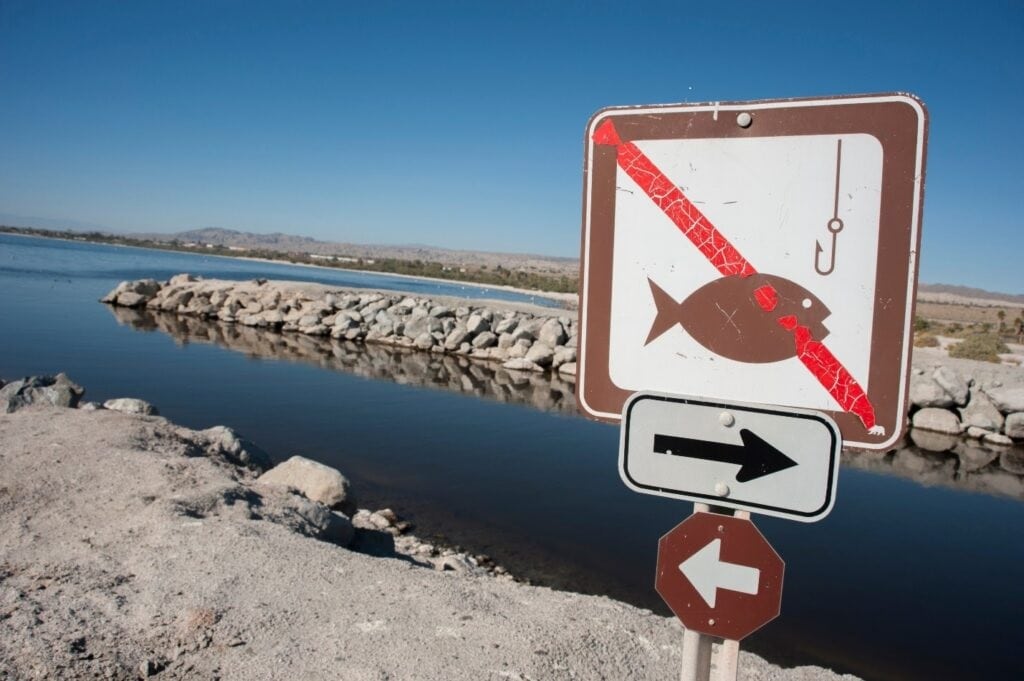The Salton Sea is a large, saline lake located in the southeastern corner of California, in the United States. The history of the Salton Sea is one of both triumph and tragedy, as the lake has gone through periods of prosperity and environmental degradation. Despite being a popular tourist destination in the mid-20th century, the Salton Sea has been largely forgotten by the public and now faces a host of potential health issues in the future.
The Origin of The Salton Sea
The Salton Sea was formed in 1905, when heavy rains caused the Colorado River to overflow and create a large body of water in the low-lying Salton Sink. Over the following decades, the lake became a popular destination for boating, fishing, and other recreational activities, with resorts and communities springing up around its shores. However, the Salton Sea has always been a fragile ecosystem, prone to fluctuations in water level and temperature. In the mid-20th century, a combination of factors led to the lake’s decline. Agricultural runoff, sewage discharge, and other pollutants began to flow into the lake, causing water quality to deteriorate. At the same time, changes in the Colorado River’s flow and irrigation practices in the region caused the lake’s water level to drop, exposing large areas of shoreline and creating dust storms.
Potential Health Risks Posed by The Salton Sea
Today, the Salton Sea is a shadow of its former self. The lake is now nearly 50% saltier than the ocean, and its water is highly contaminated with agricultural runoff, heavy metals, and other toxins. Fish populations have declined, and many bird species that once depended on the lake for food and habitat have disappeared. Meanwhile, the exposed lakebed has created a major source of air pollution, as dust storms pick up toxic particles and carry them into nearby communities. The health impacts of the Salton Sea’s decline are not yet fully understood, but there are several potential risks. Exposure to the toxic chemicals found in the lake’s water and dust can cause a range of health problems, including respiratory issues, neurological disorders, and cancer. Children and pregnant women may be particularly vulnerable to these risks.
In addition, the loss of habitat and food sources for birds and other wildlife could have ripple effects throughout the ecosystem. As species disappear, the delicate balance of the ecosystem could be further disrupted, potentially leading to even more environmental and health problems.
A Slow Growing Hazard
Despite these risks, efforts to restore the Salton Sea have been slow and difficult. The lake’s location in an arid, sparsely populated region makes it a low priority for policymakers, and the cost of restoration is estimated to be in the billions of dollars. However, some advocates argue that restoring the Salton Sea is not just a matter of environmental stewardship, but also a matter of public health and social justice. The history of the Salton Sea is a cautionary tale of the dangers of human impact on fragile ecosystems. While the lake may have once been a popular tourist destination, it now faces a host of potential health risks due to decades of neglect and pollution. Restoring the Salton Sea may be a difficult and expensive task, but it is also a vital one for the health and wellbeing of both the surrounding communities and the wider ecosystem.
Experienced Attorneys Nationwide
McCune Law Group has been representing individuals and small businesses for more than 30 years. Our team of Environmental and Class Action attorneys will never place profits above results. Our clients’ experiences and outcomes are our top priority, and it shows. We’ve recovered more than $1 billion for our clients and have successfully litigated against Fortune 500 companies like Wells Fargo, Hyundai, Toyota, and more.
To learn more about our team of environmental attorneys and the cases they are handling, call (909) 345-8110 today!
